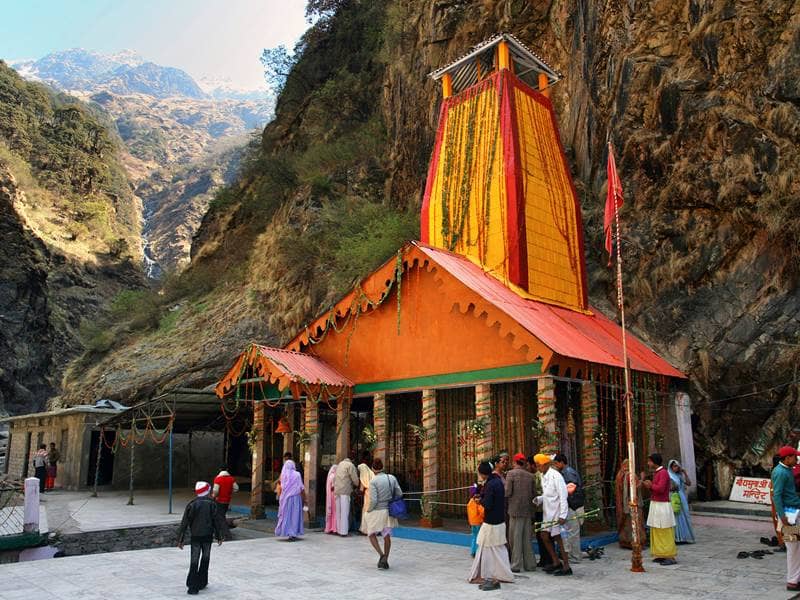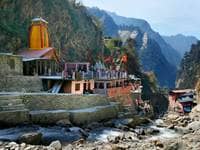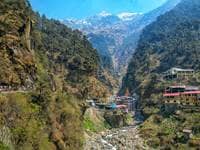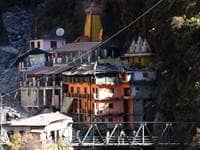
- Trending:
- Pope Leo Xiv
- |
- Israel
- |
- Trump
- |
- Social Justice
- |
- Peace
- |
- Love
The 100 Most Holy Places On Earth
Yamunotri Temple





Associated Faiths:
Hinduism
Accessibility:
Open to visitors between May and October.
Annual Visitors: 475,000
History
The Yamunotri Temple is a Hindu shrine, perched in the Himalays, at an elevation of nearly 11,000 feet. The temple is dedicated to the Hindu goddess Yamuna, who is traditionally perceived as being in the form of a river. The Yamuna river is sacred. Indeed, it is considered the second most sacred river in all of India. It is a main tributary of the Ganges River—which is (in Hindu belief) the most sacred of any body of water on the earth.
Its main temple, which rests at a very high elevation, was built in 1839. It is nearly inaccessible—as it requires a long drive up the mountain until one reaches the end of the physical road. At that point, the only way to reach the temple it to make a more than 8-mile steep hike further up the mountain, with narrow passes and sheer drops of 200-300 feet. For a healthy pilgrim, the hike will take five or six hours, traversing very rough terrain.
There is a temple dedicated to Lord Shiva approximately halfway up the mountainous trek. Pilgrims traditionally stop there and engage in puja (or worship) in an attempt to rid themselves of impurities or bad astrological influences prior to approaching the main shrine at the end of the hike—that of the goddess Yamuna. The Yamunotri Temple has a sanctum sanatorium (called “Garba Griha”) and an assembly hall. There is a black marble statue of the goddess, which worshipers approach for darshan. Next to the black statue of Yamuna is a white statue of the goddess, Ganga. These two statues stand side-by-side just as the two sacred rivers (which the statues represent) feed into each other.
King Naresh Sudarshan Shah is said to have built the original granite stone temple (in the 19th century). However, the fact that the site is mentioned in ancient Hindu texts suggests that the site has been holy for millennia. The temple sustained significant damage only years after it was built, because of an earthquake and (according to some) an avalanche resulting from that quake. The temple was reconstructed through the commission of the Maharani of Jaipur. Owing to its remoteness, its nearly half-million visitors each year is quite surprising.
Religious Significance
The Yamunotri Temple is a Hindu shrine dedicated to the goddess Yamuna—who is an avatar (or incarnation) of Radha, one of the wives of Lord Krisha. As Yamuna, she is reverenced as a symbol of purity. Consequently, she is believed to have the power to cleanse the souls of devotees. Because she is both a goddess and a river, those seeking cleansing by her bathe in her waters (in the form of a hot spring near the temple)—and typically do so before entering the shrine and engaging in darshan (i.e., the viewing of her image or idol). Owing to the goddess’ power to remove karma, the Yamunotri temple is a “sacred site.” Pilgrims see the arduous trek to the temple worth the promised blessing of cleanliness offered by the temple’s goddess.
There are two hot springs at Yamunotri. While the one used for ritual cleansing is simply warm and pleasant to relax in, the other is actually boiling hot. (The uniqueness of having two hot springs from the same source, side-by-side, with such a difference in temperature is seen by some devotees as evidence of the presence and influence of the goddess at this “sacred site.”) Pilgrims who come to the temple and intend on making an offering to Yamuna, will typically take a cloth bag of rice, place it in the boiling water of the hottest of the two hot springs. In only minutes, the rice is cooked and can be used to make prasad—or a sanctified food offering, which is commonly made by Hindus when they engage in puja, or worship. To many, this seems nothing shy of miraculous.
According to the lore, the Hindu sage Asit Muni lived at the site of the Yamunotri Temple. During his time there, he daily immersed himself in the two sacred rivers—the Yamuna and the Ganges. As he aged, he became incapable of making the physical trek to the sacred waters of the Ganges—owing to his frailness. Consequently, and unexpectedly, the Ganges appeared next to the Yamunotri so that he could continue to ritually immerse himself in both. This is one more miracle attributed to this site’s sacral nature, and which makes it an important pilgrimage site for practitioners of Hinduism.
For some, the Yamunotri Temple’s obscure and remote location is transformative for the pilgrim specifically because of its symbolism. Being difficult to access, and requiring significant effort to visit, the shrine mirrors every sincere Hindu’s effort to achieve enlightenment and, thereby, escape the cycle of reincarnation. Just as the temple is fully removed from the world, the most faithful of Hindus feel a need to remove themselves from worldly attachments and desires in order to escape the influences which hinder their pursuit of Nirvana. Hence, the Yamunotri Temple is a holy house reminding pilgrims of the path to oneness with Brahman.








